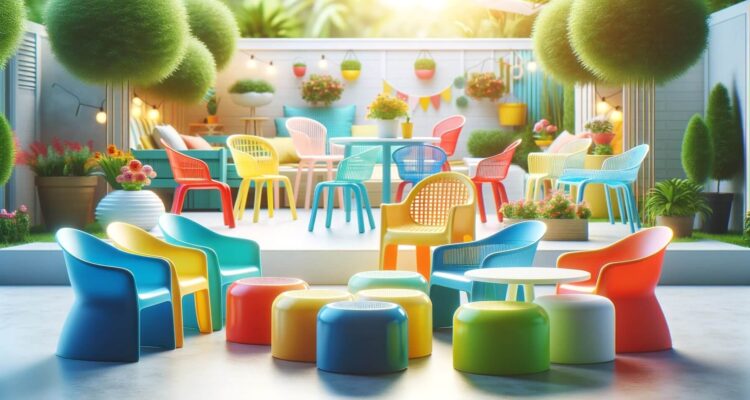Sustainable interior design has been a growing trend in recent years, as more people become aware of the negative impact that traditional furniture production has on the environment. One aspect of sustainable interior design is the use of eco-friendly materials, such as plastic furniture.
Plastic furniture may not seem like an obvious choice for sustainable interior design, but it actually has many benefits that make it a great option for eco-conscious consumers. In this article, we’ll explore why plastic furniture is the future of sustainable interior design.

Table of Contents
Versatility and Durability
Plastic furniture is extremely versatile, as it can be molded into any shape or design. Many plastic molding companies offer custom designs, allowing for unique and creative furniture pieces. This versatility also extends to its durability – plastic furniture is resistant to wear and tear, making it a long-lasting choice for interior design.
The durability of plastic furniture also makes it a great option for outdoor use. Unlike traditional wooden furniture, which can be damaged by weather and insects, plastic furniture can withstand the elements without deteriorating. This means less waste and longer-lasting pieces in your home.
Recyclability
Plastic furniture is also highly recyclable, making it a more environmentally friendly option compared to traditional wooden or metal furniture. With the growing concern over plastic pollution, there has been a push for more sustainable ways to use and dispose of plastic.
Once a plastic furniture piece has reached the end of its lifespan, it can be easily recycled and turned into new products. This reduces the amount of plastic waste in landfills and oceans, contributing to a more sustainable future.
Lightweight
Another benefit of plastic furniture is its lightweight nature. This makes it easier to transport and handle during production and delivery, reducing carbon emissions from transportation. It also makes it easier for consumers to move and rearrange their furniture, promoting a more sustainable and flexible living space.
When considering the life cycle of a piece of furniture, from production to disposal, plastic furniture has a lower carbon footprint compared to traditional materials. This makes it a more sustainable choice for interior design.
Low Maintenance
Plastic furniture is also known for its low maintenance requirements. Unlike wooden furniture which may require frequent polishing or metal furniture that can rust, plastic furniture can simply be wiped clean with a damp cloth. This not only saves time and effort but also reduces the need for harsh chemical cleaners that can be harmful to the environment.
The low maintenance aspect of plastic furniture also means it can last longer, reducing the need for frequent replacements. This further contributes to a more sustainable lifestyle.
Cost-effective
In addition to its sustainability benefits, plastic furniture is also a cost-effective option. It is typically cheaper than traditional furniture materials, making it more accessible for those looking to furnish their homes on a budget. This affordability factor also makes plastic furniture a great choice for businesses and commercial spaces looking to incorporate sustainable interior design without breaking the bank.
In conclusion, plastic furniture is a versatile, durable, recyclable, lightweight, low-maintenanc, and cost-effective option for sustainable interior design. As we continue to make efforts towards reducing our environmental impact, choosing plastic furniture can be a small but impactful step in the right direction. By supporting eco-friendly materials and practices, we can create a more sustainable future for ourselves and the planet. So, let’s embrace the use of plastic furniture in our homes and businesses, and contribute towards a greener world.
Do you want to learn more about sustainable interior design and how you can incorporate it into your home? Check out our other articles on the topic! Together, we can make a positive difference for our planet.